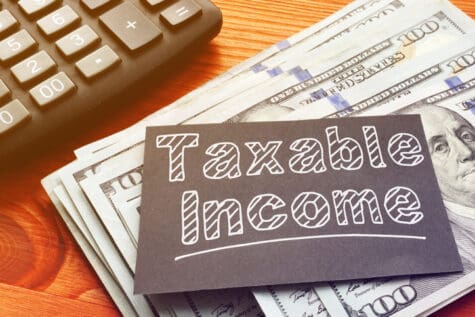 A few weeks ago, I wrote about principles and rules for selling investments. Today I deal with the issue of income tax on investments.
A few weeks ago, I wrote about principles and rules for selling investments. Today I deal with the issue of income tax on investments.
Perhaps the most common reason offered by investors and promoted by the experts is the drag of income taxes paid upon one’s investment gains. I am a person who likes to look at all sides of an issue. Perhaps this is a leftover from law school, but I believe I had the habit earlier.
First, remember that this is only an issue upon accounts that are not tax sheltered, ones we call taxable. Most investment assets of the middle class are instead held in IRA’s or other retirement accounts which will be taxed only when funds are withdrawn (if even then).
If the account is taxable, the principal has already been taxed, but the fruit–whether interest, dividends or capital gains—is often taxed. But if you sell a position after holding it at least one year and a day, your rate of federal tax may be zero, 15 or 20 percent, depending on your total taxable income.
Many studies show holding investments that steadily increase over long periods of time can definitely add a percent or more to performance. There is a concise explanation of this available at www.investopedia.com/terms/t/tax-drag/asp.
What I have witnessed over the past 50 years usually leads me to a different conclusion. Too many times, positions were not sold until most prior gains were lost.
GE provides us with a terribly useful example. Suppose you purchased 100 shares 25 years ago on February 23, 1996, at $12.50. It was a stalwart of the economy, paid a dividend each quarter, and usually rose in value with the stock market.
During 2000, when the dot com companies were falling like rain, GE kept rising. You were pleased that by September that year, it reached $58 a share, a gain of 364 percent. It still paid its quarterly dividend, it would probably continue to rise in value, and you did not want to pay tax on $4,550 gain in 2000. You did not sell it.
Unfortunately, that was its peak value. Since 2000 it fell and rose and fell some more. Adjusted for a recent split, it hit a new low in March, 2020 of $5.48 per share. But as of Monday, February 22, it had rebounded 128 percent to $12.50. You just got your 20 year old principal back.
If sold at $50, even down 13 percent, in October or November of 2000, you would have had about $2,800 more principal left after a 25 percent tax. In November, 2000, Apple (adjusted for splits) was selling at a high of 41 cents per share. The $2,800 would buy 6,829 shares of AAPL. Currently about 12 percent below its January high, the $2,800 invested in it then would now be worth $860,487 at Monday’s close.
This seems a farfetched example, but there are a quite a few companies higher in value by between 500 and a few thousand percent higher in two decades. Time is even more precious than money. Investing is best judged by the time value of money. It is a terrible thing to waste.
